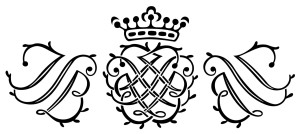A pianist seated at a grand, a violinist standing nearby in a small recital room: at first we expect a conventional performance video of a Bach violin concerto. But in this Stephen Malinowski creation, after the musicians begin to play, across a black band at the top of the video screen scroll luminescent shapes. For the millions who have viewed Malinowski’s work on his YouTube channel, the Music Animation Machine (MAM), these glowing emblems illuminate Bach’s compositions with visual representations of the music.
“When I hear a Bach piece the first time, I like it, but as I get to know it better, I usually like it more and more,” Malinowski effuses. “There’s a depth to his music, which I’ve encountered in other composers but never along with everything else that Bach offers: his technical fluency, his beautiful constructions.”
Tall and lean, with a grayish-white mane of hair down to his collar and a gently ironic manner, Malinowski is a pianist, composer, software developer, and inventor: the Willy Wonka of the classical music world. He lives alone in the Bay Area. His solitude—he rarely attends even classical music concerts—stems more from his personality, he explains, than his work. Yet that solitude has gestated the animations he created for Björk’s Biophilia app as well as his magnum opus, his invention of the Music Animation Machine (MAM). To watch one of his videos is to crash through the ceiling of traditional music notation.
 His luminescent shapes on the screen—yellow, orange, light blue, and sapphire in the MAM video of the Bach Violin Concerto in A Major, for example—are artistic and instructive at the same time. Each shape represents a musical note and lights up at the exact moment that the pianist strikes their keys or the violinist slices their bow. The higher the shapes are on the screen, the higher the note’s pitch; the larger the shape; the longer the note’s duration. We are able to absorb the music’s structure and movement without much mental effort.
His luminescent shapes on the screen—yellow, orange, light blue, and sapphire in the MAM video of the Bach Violin Concerto in A Major, for example—are artistic and instructive at the same time. Each shape represents a musical note and lights up at the exact moment that the pianist strikes their keys or the violinist slices their bow. The higher the shapes are on the screen, the higher the note’s pitch; the larger the shape; the longer the note’s duration. We are able to absorb the music’s structure and movement without much mental effort.
Usually, the act of listening to Bach’s Baroque-era counterpoint easily taxes our 21st century minds, often unexposed to music with multiple voices. “For someone without much experience listening to contrapuntal music,” Malinowski says, MAM’s main benefit is that it helps people “to hear the piece as being composed of multiple lines proceeding in parallel.” In the MAM video of the Bach violin concerto, we see the violin’s voice (represented by orange circles) and the piano’s soprano voice (yellow circles) run in parallel as they scamper up the scale; later they delicately step past each other to create a satisfying harmony. All the while, diamonds in light blue and sapphire (the piano’s bass and tenor voices) bubble from underneath.
Many fans have thanked Malinowski for giving them access to Bach. “Your video of Bach’s Tocatta and Fugue reopened my ears to classical music,” gushes one fan. Followers also include music students, amateur musicians, and parents. “My son Max is three months old. He will sit on my lap and stay focused on the music and visualizations you have created,” reports a proud father.
Since his 20s, Malinowski has studied Bach’s music in earnest. “I’m about 60 now,” he says, “and I’m still learning.” Displayed on his MAM YouTube channel are videos for a wide range of Bach (whom he calls “The Master”) pieces: preludes and fugues from The Well-Tempered Clavier, cantatas, and movements from the Brandenburg concertos, in all over 50 Bach videos representing over four hours of playing time. He also does a host of other composers, from Chopin to Stravinsky.
Malinowski has continually innovated the Music Animation Machine since he first launched it in the 1980s. He uses the term MAM not only for his YouTube channel, but also the customized MIDI player he has developed and his entire process of mapping the symbols to the notes. Recently he unveiled a live MAM performance. At the 2012 TEDxZurich, Malinowski sat on stage with the musicians, his gray head bent over in concentration as he turned a crank, one rotation for each beat, while on a large screen overhead his colorful symbols for Bach’s notes blinked in time to the music.
Malinowski’s singular achievement has been to deepen our understanding of Bach’s radiant complexities. “Even for music that I’ve studied and performed, I find myself watching a video and seeing things that I hadn’t noticed,” he says, “the way the texture changes, the way the voices interact, how a melodic figure is reused.” For us, Stephen Malinowski has uncovered Bach’s subtle, inner lights.




0 Comments